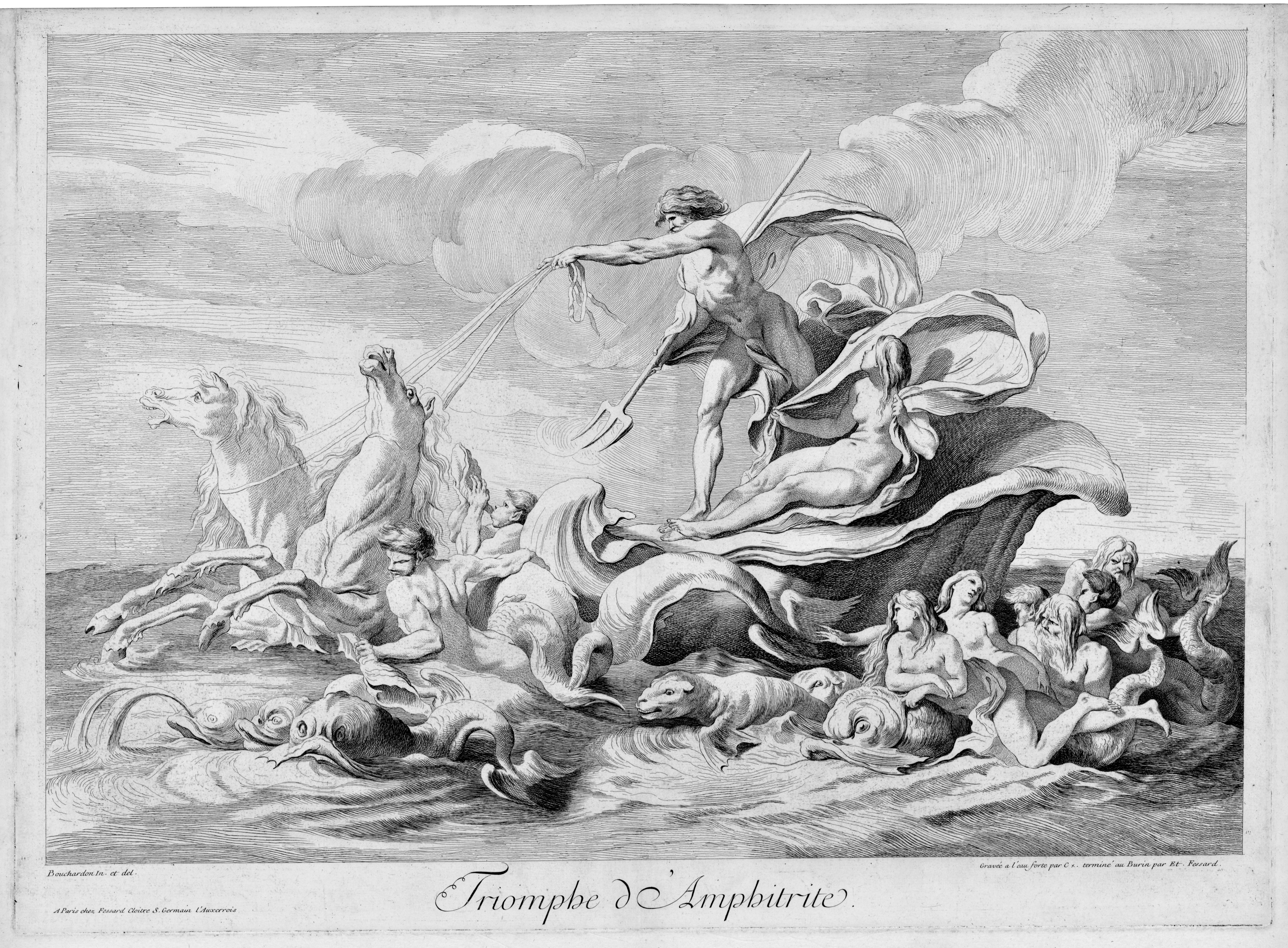Loading the page ...
Anne-Claude-Philippe de Tubières Comte de Caylus
(1692–1765, Paris)
and Étienne Fessard (1714–1777, Paris). Le Triomphe d’Amphitrite. Etching with burin after Edme Bouchardon. 40.3 x 58.3 cm. Inventaire du Fonds Français (Fessard) 18; Exhibition catalogue Edme Bouchardon (1698–1762): une idée du beau, edited by Anne-Lise Desmas, Édouard Kopp et al., Paris 2016, p. 300.
Anne-Claude-Philippe de Tubières, Comte de Caylus was an antiquarian bookseller, writer, collector and etcher who in 1731 was accorded the status of an amateur member of the Académie Royale de Peinture et de Sculpture. The address states that the etching was reworked with a burin and issued by the Parisian engraver and publisher, Étienne Fessard. Edme Bouchardon is now regarded as one of the most creative and versatile 18th century French artists and above all as an outstanding forerunner of Neoclassicism. Trained by the sculptor, Guillaume Coustou the Younger, Bouchardon was awarded the coveted Prix de Rome in 1722 and spent the next ten years in the Eternal City, where he devoted most of his time to producing portrait busts and marble replicas of ancient statues. Having returned to Paris, he was made a member of the Académie royale and was also appointed court sculptor to Louis XV. In addition to his activities as a sculptor Bouchardon was a brilliant draughtsman who supplied designs for various kinds of artwork, including medals, gravestones and prints.
Edme Bouchardon’s Triumph of Amphitrite is a pendant to his Triumph of Bacchus (cat. Paris 2016, no. 183). Both works were engraved by Caylus and Fessard and are among the four largest prints after drawings by Bouchardon. This imposing composition shows Amphitrite next to Poseidon traversing the sea in a monumental shell drawn by two sea horses. After her flight to escape the advances of the enamoured Poseidon, Amphitrite was found by one of the sea god’s dolphins and persuaded to yield to Poseidon. Accompanied by a picturesque escort of Nereids, Tritons and sea creatures, the main protagonists with the young Amphitrite, who looks reverently up at Poseidon, are grouped together in a compositional rocaille.
The scene is imbued with an extremely dynamic inner agility that is very much in the Rococo spirit. The lapping waves are rendered with consummate skill. Organic forms blend with the figures of the gods and mythical figures to produce a synthesis of outstanding originality. A very fine, crisp impression with margins, trimmed to the platemark at the top. Unobtrusive smoothed central fold, minor traces of handling, otherwise in excellent condition.
Contact us for further information